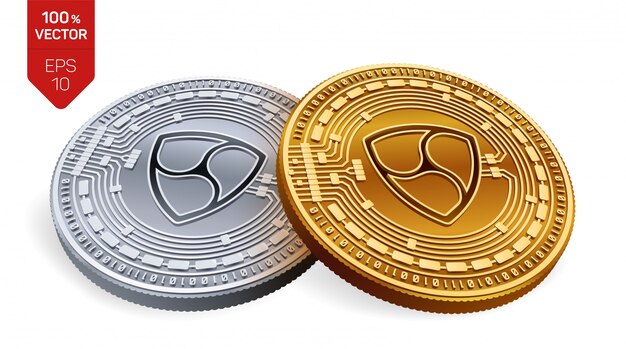Understanding the Ethereum Merge: A Comprehensive Explanation
Embark on an illuminating expedition into the realm of Ethereum unification, where the convergence of revolutionary concepts shapes the future of blockchain technology. Delve into the depths of this transformative merger as we unravel the intricate threads that weave together in this epoch-making phenomenon.
Take a moment to explore the captivating narrative behind the integration of Ethereum, where disparate elements blend harmoniously to unlock a realm of boundless potential. This enthralling journey invites you to immerse yourself in a tapestry of innovation, propelled by the fusion of cutting-edge ideas and seamless collaboration.
Prepare to be astounded as we peel back the layers of Ethereum’s merger, revealing a symphony of decentralized prowess that propels this groundbreaking platform into uncharted territories. Through the visionary leadership of passionate individuals and the tireless efforts of a vibrant community, Ethereum’s unification becomes a paragon of progress, embodying the spirit of global collaboration and collective evolution.
The Evolution of Ethereum
In this section, we will explore the remarkable journey of Ethereum, tracing its development and growth from its inception to the present day. We will delve into the key milestones and significant improvements that have shaped Ethereum into the powerful blockchain platform it is today.
Genesis: The Birth of Ethereum
The story of Ethereum begins with its visionary founder, Vitalik Buterin, and the publication of the Ethereum whitepaper in 2013. This seminal document introduced the concept of a decentralized, programmable blockchain platform that could enable the creation of smart contracts and decentralized applications (DApps). Its groundbreaking ideas and innovative design immediately caught the attention of the global blockchain community, setting the stage for Ethereum’s evolution.
Major Milestones and Transformative Upgrades
Since its launch in 2015, Ethereum has undergone several transformative upgrades and major milestones that have propelled the platform to unprecedented heights. Examples of such upgrades include the implementation of the Homestead, Byzantium, and Constantinople hard forks, each bringing significant improvements to the security, scalability, and functionality of the Ethereum network.
Another momentous milestone in Ethereum’s evolution was the introduction of the Ethereum 2.0 upgrade, also known as Ethereum Serenity or the merge. This upgrade aims to transition the network from the energy-intensive Proof of Work (PoW) consensus mechanism to the more sustainable Proof of Stake (PoS) consensus mechanism. The Ethereum 2.0 upgrade promises to enhance the platform’s efficiency, speed, and overall user experience.
| Year | Development |
|---|---|
| 2013 | Publication of the Ethereum whitepaper by Vitalik Buterin |
| 2015 | Launch of the Ethereum network |
| 2016 | Implementation of the Homestead hard fork |
| 2017 | Activation of the Byzantium hard fork |
| 2019 | Introduction of the Ethereum 2.0 upgrade |
These milestones, along with numerous other developments, collaborations, and community-driven initiatives, have been instrumental in shaping Ethereum into a dominant force in the world of blockchain technology. Through continual iteration and innovation, Ethereum has evolved into a versatile platform that has enabled the creation and growth of a vast ecosystem of decentralized applications, decentralized finance (DeFi) protocols, and much more.
As Ethereum continues to evolve, with upcoming upgrades such as the merge and shard chains, its impact on the blockchain industry and beyond is only poised to increase. The future holds exciting possibilities for Ethereum, and its journey of evolution remains an ongoing and captivating narrative.
What is the Ethereum Merge?
In this section, we will explore the concept and significance of the Ethereum Merge, a pivotal and transformative development within the Ethereum ecosystem. The Ethereum Merge represents a crucial milestone for the Ethereum network, as it combines the functionalities and infrastructure of the existing Ethereum Proof of Work (PoW) and Ethereum 2.0 Proof of Stake (PoS) chains. This merge aims to bring about a more efficient, sustainable, and scalable blockchain that will drive the future of decentralized applications and smart contract execution.
Benefits of the Ethereum Merge
In this section, we will explore the multitude of advantages that the Ethereum Merge brings to the blockchain ecosystem. By combining and integrating various elements, this monumental merger unlocks an array of benefits that propel the Ethereum network towards a more efficient and sustainable future.
Enhanced Scalability and Throughput
One of the key benefits of the Ethereum Merge is its ability to significantly enhance scalability and throughput. By transitioning from a Proof-of-Work (PoW) consensus mechanism to a Proof-of-Stake (PoS) model, the network gains a higher capacity for processing transactions without compromising security. This improvement allows Ethereum to support a larger user base and handle increased transaction volumes, ultimately paving the way for mainstream adoption.
Reduced Energy Consumption and Environmental Impact
Another crucial advantage of the Ethereum Merge is its potential to reduce energy consumption and minimize the network’s environmental footprint. With the elimination of resource-intensive mining operations, the transition to PoS slashes the immense energy requirements associated with PoW. Not only does this shift result in a more eco-friendly blockchain, but it also aligns with global sustainability goals, fostering a more responsible approach to decentralized technology.
The Ethereum Merge represents a significant milestone in the evolution of the Ethereum network, offering not only technical improvements but also aligning with broader societal and environmental objectives. Through enhanced scalability, increased transaction throughput, and reduced energy consumption, this merger ushers in a new era of efficiency and sustainability, further solidifying Ethereum’s position as a leading blockchain platform.
The Impact on Miners and Validators
As the Ethereum network transitions towards the merge, a significant shift will occur in the roles and responsibilities of both miners and validators. This section explores the implications of this transition, examining the effects on these key participants in the Ethereum ecosystem.
Miners: Adapting to a New Reality
With the Ethereum merge, miners will undergo a fundamental transformation in their role. The current proof-of-work (PoW) consensus mechanism, which relies on miners solving complex mathematical puzzles to validate and add new blocks to the blockchain, will give way to a proof-of-stake (PoS) mechanism. This means that the energy-intensive mining process will no longer be necessary, and miners will need to adapt to a new reality.
Instead of competing to solve puzzles and secure the network, miners will be able to participate in the consensus protocol by staking their ether as validators. This shift not only eliminates the need for expensive mining hardware and energy consumption but also aligns the network’s security with the economic stake of validators. Miners will have the opportunity to become validators and continue to contribute to the Ethereum network’s operation.
Validators: The Guardians of Network Security
Validators will play a crucial role in maintaining the security and integrity of the Ethereum network post-merge. Through staking their ether, validators become responsible for proposing and attesting to new blocks, ensuring their validity and consensus. Validators will need to operate specialized software called the Beacon Chain client, which facilitates the PoS consensus and rewards validators for their participation.
The transition to an Ethereum network secured by validators introduces a shift in the incentives and requirements for participants. Validators are expected to hold a certain amount of ether as a stake, which aligns their interests with the network’s overall stability and security. Additionally, validators will be subject to penalties, such as slashing, if they engage in malicious behavior or fail to follow the consensus rules, ensuring the network’s integrity is upheld.
| Miners | Validators |
|---|---|
| Role transformation | The new guardians of network security |
| Shift from PoW to PoS | Responsibility for proposing and attesting to new blocks |
| Elimination of energy-intensive mining | Requirement to hold ether as a stake |
| Potential transition to becoming validators | Operation of Beacon Chain client |
Challenges and Concerns with the Ethereum Merge
As the process of merging Ethereum’s two chains approaches, there are various challenges and concerns that need to be addressed. This section will delve into the potential issues and obstacles that may arise during the Ethereum Merge, highlighting the importance of careful planning and consideration.
One of the primary concerns revolves around the successful integration of Ethereum’s two chains. The merge aims to combine the functionalities and features of the existing Ethereum mainnet and Beacon chain, creating a unified network. However, this process requires meticulous coordination to ensure a smooth transition and compatibility between the different components of the blockchain.
Another key challenge lies in the potential for increased congestion and scalability issues. As more users and applications migrate to Ethereum post-merge, there is a possibility of elevated network congestion, resulting in slower transaction processing times and higher fees. To mitigate this challenge, developers and stakeholders must focus on implementing effective scalability solutions and optimizing network performance.
Security is also a significant concern surrounding the Ethereum Merge. The integration of two separate chains inherently introduces complexities that could potentially compromise the overall security of the network. It is crucial to thoroughly assess and address potential vulnerabilities and attack vectors to maintain the integrity and trustworthiness of the Ethereum ecosystem.
Furthermore, decentralized governance and decision-making play a crucial role in addressing challenges and concerns in the Ethereum Merge. As the merge process moves forward, there must be a collaborative effort among stakeholders to establish effective governance mechanisms that promote transparency, inclusivity, and the ability to adapt to emerging challenges.
In summary, the Ethereum Merge presents several challenges and concerns that require careful consideration and proactive measures. The successful integration of the two chains, scalability improvements, security enhancements, and decentralized governance will be vital factors in ensuring a smooth and sustainable transition to the merged Ethereum network.
The Roadmap for the Ethereum Merge
In this section, we will explore the path forward for the integration of Ethereum’s disparate components into a unified network. By outlining the roadmap for the Ethereum Merge, we aim to provide a clear understanding of the steps and milestones that will lead to the successful consolidation of Ethereum’s various technical aspects.
Our focus will be on elucidating the progression towards the merger of Ethereum’s mainnet with the Beacon Chain and the subsequent transition to Proof of Stake (PoS). We will delve into the intricacies of this process, highlighting key developments such as the deployment of the Beacon Chain and the implementation of the Docking Phase.
Furthermore, we will examine the importance of coordination and collaboration among the Ethereum community, as the successful execution of the merger is contingent upon a collective effort. We will discuss the efforts of the Ethereum developers and community members who are actively working towards this monumental milestone.
Lastly, we will address the anticipated benefits and challenges that lie ahead on the roadmap to the Ethereum Merge. By highlighting the potential advantages of a more efficient and sustainable network, as well as the obstacles that need to be overcome, we aim to provide a comprehensive overview of what the future holds for Ethereum and its users.
Questions and answers: Ethereum the merge explained
What is the Ethereum Merge?
The Ethereum Merge refers to the upcoming upgrade of the Ethereum network where it will transition from a Proof of Work (PoW) consensus mechanism to a Proof of Stake (PoS) consensus mechanism.
Why is the Ethereum Merge necessary?
The Ethereum Merge is necessary for several reasons. Firstly, it aims to improve the scalability and performance of the Ethereum network. Secondly, it is designed to reduce the energy consumption associated with mining, as PoS requires significantly less energy compared to PoW. Lastly, the Merge will pave the way for the upcoming Ethereum 2.0 upgrade, which will bring various enhancements to the network.
How will the Ethereum Merge affect miners?
The Ethereum Merge will eliminate the need for mining on the Ethereum network. Miners, who currently secure the network and validate transactions through mining, will no longer be required. Instead, the network will be secured and validated through the staking of ETH by validators, who will replace miners in the new PoS consensus mechanism.
What are the benefits of transitioning to Proof of Stake?
Transitioning to Proof of Stake has several benefits. Firstly, it significantly reduces the environmental impact of the Ethereum network, as it does not require the intense computational power and energy consumption associated with mining. Secondly, PoS allows for higher scalability and transaction throughput, enabling the Ethereum network to handle a larger number of transactions more efficiently. Lastly, PoS promotes decentralization by giving more participants the opportunity to become validators, as opposed to the limited number of miners in a PoW system.
What is the Ethereum blockchain, and how does it differ from other blockchains?
The Ethereum blockchain is a decentralized platform that enables developers to build and deploy smart contracts and decentralized applications (DApps). Unlike some other blockchains, Ethereum allows for programmable transactions and interactions, making it a versatile platform for various use cases.
What role does the Ethereum Foundation play in the Ethereum ecosystem?
The Ethereum Foundation is a non-profit organization that supports the development and adoption of the Ethereum blockchain. It funds research, provides grants to developers, and oversees the governance of the Ethereum protocol.
How does Ethereum compare to Bitcoin?
While both Ethereum and Bitcoin are cryptocurrencies, they serve different purposes. Bitcoin primarily functions as a digital currency and store of value, whereas Ethereum is a platform for building decentralized applications and executing smart contracts.
What significance does the year 2022 hold for Ethereum?
In 2022, Ethereum underwent several upgrades and developments aimed at improving its scalability, security, and functionality. These upgrades included the transition to Ethereum 2.0, which introduced staking and sharding to the network.
What is a node in the context of the Ethereum blockchain?
A node is a computer connected to the Ethereum network that helps maintain the blockchain by validating and relaying transactions. Nodes can be full nodes, which store the entire Ethereum blockchain, or light nodes, which only store partial information.
What are cryptocurrencies, and how do they relate to the Ethereum blockchain?
Cryptocurrencies are digital assets that use cryptographic techniques to secure transactions and control the creation of new units. Ethereum’s native cryptocurrency, Ether (ETH), is used to pay for transactions and computational services on the Ethereum network.
What is the significance of holding 32 ETH in the Ethereum ecosystem?
Holding 32 ETH allows users to become validators in the Ethereum 2.0 network by staking their coins. Validators play a crucial role in securing the network and are rewarded with ETH for their participation.
What is sharding, and how does it benefit the Ethereum blockchain?
Sharding is a scaling solution for blockchain networks that involves breaking the blockchain into smaller “shards” to process transactions in parallel. This helps increase the throughput and capacity of the Ethereum network, making it more efficient and scalable.
What is the Shanghai upgrade, and what changes did it bring to Ethereum?
The Shanghai upgrade was a planned protocol upgrade for Ethereum that aimed to improve the network’s security, scalability, and efficiency. It introduced various changes, including optimizations to the Ethereum Virtual Machine (EVM) and enhancements to transaction processing.
Why is September 15 significant in the context of Ethereum?
September 15 may be significant for Ethereum due to potential events such as protocol upgrades, network milestones, or community announcements. It’s essential for Ethereum enthusiasts to stay informed about any developments or events scheduled for this date.
What is the significance of staked ETH in the Ethereum ecosystem?
Staked ETH refers to Ethereum that has been deposited by users to participate in the network’s proof-of-stake consensus mechanism. Stakers are rewarded for securing the network and validating transactions.
What changes are expected in 2023 regarding Ethereum?
In 2023, Ethereum is expected to undergo significant changes, particularly with the transition to Ethereum 2.0. This upgrade will introduce proof-of-stake consensus and scalability improvements to the network.
How does the Ethereum merge impact node operators and stakers?
The Ethereum merge will transition the network from proof-of-work to proof-of-stake, eliminating the need for mining and allowing stakers to validate transactions. Node operators will continue to play a crucial role in maintaining the network’s infrastructure.
What is the significance of the Ethereum Shanghai upgrade?
The Ethereum Shanghai upgrade is a planned protocol upgrade aimed at enhancing the security, scalability, and efficiency of the Ethereum blockchain. It may introduce improvements to the network’s consensus mechanism and transaction processing.
How does the Ethereum merge affect transaction fees on the network?
Following the merge, transaction fees on the Ethereum network may change as the network transitions to a proof-of-stake consensus mechanism. This transition could potentially result in adjustments to fee dynamics and network congestion.
What is the process for withdrawing staked ETH after the merge?
After the merge, users who have staked ETH will have the ability to withdraw their staked tokens from the Ethereum network. This process may involve specific steps or protocols defined by Ethereum developers.
How does the Ethereum merge impact the security of the network?
The Ethereum merge is expected to enhance the security of the network by transitioning to a proof-of-stake consensus mechanism. This mechanism relies on stakers to secure the network, providing a more energy-efficient and secure alternative to proof-of-work.
What are the key differences between Ethereum and Ethereum Classic?
Ethereum and Ethereum Classic are two separate blockchain networks that diverged following a contentious hard fork in 2016. Ethereum continued with the main chain, while Ethereum Classic maintained the original chain. Their differences lie in their development communities, network consensus mechanisms, and philosophical approaches.
What role do crypto exchanges play in the Ethereum ecosystem?
Crypto exchanges facilitate the trading of Ethereum and other digital assets, providing a platform for users to buy, sell, and exchange cryptocurrencies. They play a crucial role in the liquidity and accessibility of Ethereum in the broader market.
How has the Ethereum merge impacted the price of ETH?
The Ethereum merge may have implications for the price of ETH, as it represents a significant milestone in the network’s development. Market dynamics, investor sentiment, and network activity are factors that can influence the price of ETH before and after the merge.








No responses yet